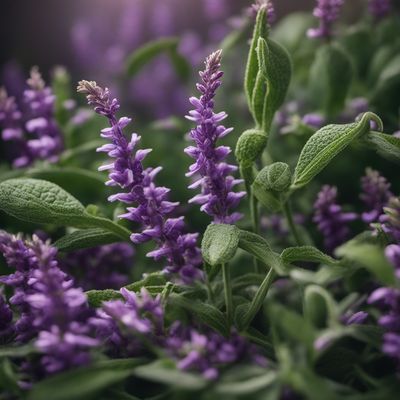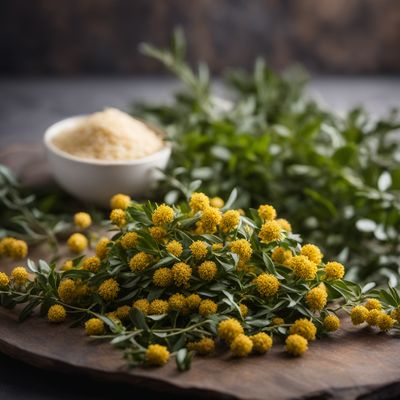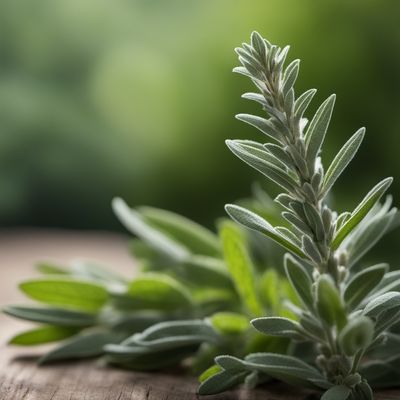
Ingredient
Borage
The Starflower Herb: Unveiling the Secrets of Borage
Borage is a herbaceous plant with vibrant green leaves and striking blue star-shaped flowers. It has a slightly hairy texture and a refreshing cucumber-like taste. The leaves are often used as a garnish, while the flowers can be used to add a pop of color to salads or frozen into ice cubes for decorative purposes. Borage is also known for its medicinal properties, as it is rich in antioxidants and essential fatty acids.
Origins and history
Borage is native to the Mediterranean region and has a long history of cultivation dating back to ancient times. It was highly regarded by the Romans and Greeks for its medicinal properties and was believed to bring courage and comfort. Borage has been used in traditional herbal medicine for centuries and was even mentioned in ancient texts such as "The Canon of Medicine" by Avicenna.
Nutritional information
Borage is a nutritional powerhouse, rich in vitamins A and C, potassium, calcium, and gamma-linolenic acid (GLA). It is also low in calories, making it a healthy addition to any diet.
Allergens
There are no known allergens associated with borage.
How to select
When selecting borage, look for fresh, vibrant leaves and flowers. Avoid wilted or discolored specimens. The leaves should be firm and free from any signs of damage or yellowing.
Storage recommendations
To maintain the freshness of borage, store it in a plastic bag or airtight container in the refrigerator. It is best used within a few days of harvesting or purchasing.
How to produce
Borage can be easily grown in a home garden. It thrives in well-drained soil and prefers full sun or partial shade. Sow the seeds directly into the ground or in pots, and keep the soil moist until germination occurs. Borage is a self-seeding plant, so it will often reappear in subsequent years.
Preparation tips
Borage leaves can be used raw in salads or cooked as a vegetable. The flowers are often used as a garnish or infused into beverages. To enhance the flavor, blanch the leaves before using them in cooked dishes. Borage pairs well with lemon, garlic, and other herbs such as mint and dill.
Culinary uses
Borage is commonly used as a decorative element in salads, cocktails, and desserts. The flowers can be candied or used to make infused oils and vinegars. The leaves can be added to soups, stews, or sautéed as a side dish.
Availability
Borage is commonly available in Mediterranean countries, such as Italy, Spain, and Greece. It is also cultivated in other regions with suitable climates, including parts of North America and Europe.
More ingredients from this category

Greek sage
The Mediterranean Herb

Other species and hybrids of genus Salvia, not elsewhere mentioned
Exploring the Hidden Gems of the Salvia Genus: A Culinary Adventure

Curry herb
The Fragrant Spice: Curry Herb

Jamé's sage
The Aromatic Herb of Wisdom

Sage
"The Wise Herb: Unveiling the Secrets of Sage"